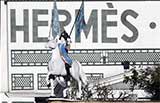China clarifies new five-year plan at key forum
(Xinhua) Updated: 2016-03-22 10:09The country has long imposed VAT on tangible goods, but services are subject to business tax, which is based on the value of a firm's sales.
Such a crude system results in a tax on tax: It is charged on the taxes already priced in the supplies they buy. VAT avoids this, as it is applied to the value added at each link in the chain of production.
The program, which began in 2012, has reduced the tax burden of enterprises, most of which are small entities, by 641.2 billion yuan ($100 billion) by the end of 2015.
Lower debt ratio
The central bank governor Zhou Xiaochuan said the country's economic leverage ratio was relatively high, especially the debt-GDP ratio.
He attributed it to the high saving-rate, which leads to more financing through banks and bonds, but less from the capital market.
One solution is to boost the capital market and channel more savings into the equity financing to cut the debt-GDP ratio.
He called for a diversified financial institution system that can help various financing packages supplement each other, such as commercial financing, development financing, policy-based financing and cooperative financing.
China will stick to the prudent monetary policy, he reiterated in early March.
- BMW to recall 6,109 vehicles in China
- Chinese premier stresses agricultural development
- China Railway eyes regional market with $2b investment in Malaysia
- Boao Forum helps Australia make vital connections with Asia: Australian minister
- Apple extends product lineup with smaller smartphone, tablet
- Marriott wins over Starwood with bid
- Geo-Jade eyes Shanghai Longzhou Xinke purchase
- Not easy to replicate domestic success, investors warned
















